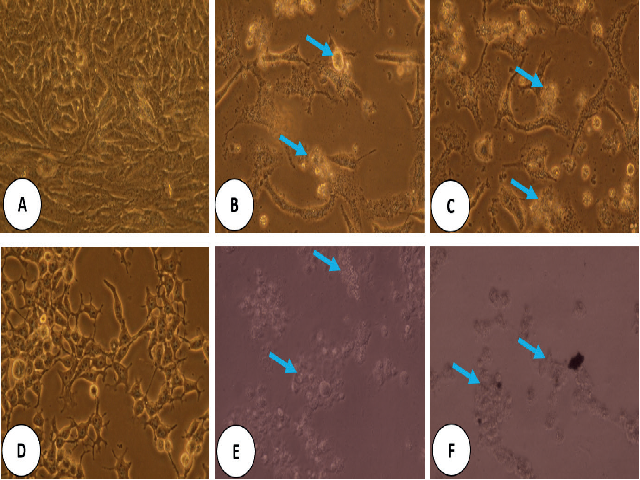Preferential Cytotoxic Effect of Vaccinium sect. Cyanococcus Fruit Extract in Human Lung Cancer Cells Related to Normal cells
DOI:
https://doi.org/10.5530/ctbp.2022.3.53Keywords:
Vaccinium sect, Cyanococcus, Antioxidant activity, cytotoxicity, Anticancer activity, A549 cells, HEK-293 cells.Abstract
The study aimed to assess the preferential cytotoxicity of the Vaccinium sect. Cyanococcus fruit extract (VCFE) in human lung cancer cells (A549) related to human normal/healthy kidney cells (HEK-293). VCFE was extracted using ethanol following the cold maceration technique. A qualitative phytochemical profile showed that VCFE was rich in phenolics and flavonoids. A quantitative phytochemical profile showed that one g of VCFE was found to contain 26.31 ± 1.09 mg gallic acid equivalent, GAE, 37.10 ± 1.82 mg quercetin equivalent, and 6.27 ± 0.39 mg tannic acid equivalent of total phenolics, total flavonoids, and total tannins, respectively. The EC50 value (effective concentration required to inhibit 50% of free radicals) of VCFE in ABTS free radical, DPPH free radical, and FRAP antioxidant assays was determined as 372.81 ± 20.58, 414.63 ± 33.08, and 504.58 ± 27.76 μg/mL, respectively. The IC50 value (concentration required to inhibit 50% of cell viability) of VCFE in human lung cancer cells (A549) and human normal kidney cells (HEK-293) was determined as 262.41 ± 23.03 and 608.05 ± 37.92 μg/mL, respectively. The findings revealed that the concentration of VCFE needed to inhibit the growth of A549 cancer cells was substantially lower than that needed to inhibit the growth of HEK-293 normal cells, demonstrating VCFE’s selective cytotoxicity for cancer cells. The study concluded that VCFE might be effective in developing specific cancer-fighting medications.



